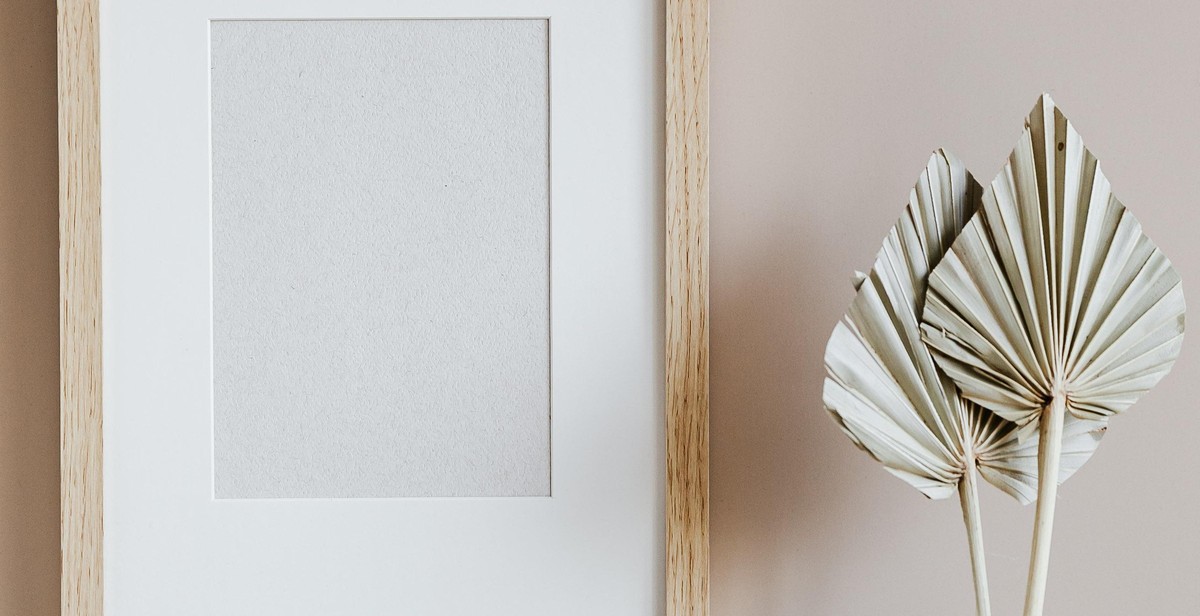How to Start a Thriving Online Home Decor Blog
Home decor is a booming industry, with millions of people looking for inspiration and ideas to decorate their homes. As a result, home decor blogging has become an increasingly popular way to share your passion and expertise with others while making money from the comfort of your own home.
Why Home Decor Blogging Is a Great Idea
Home decor blogging is a great idea for several reasons. Firstly, it allows you to share your knowledge and creativity with others who are interested in home decor. Whether you’re an interior designer, a DIY enthusiast, or just someone who loves to decorate, a home decor blog is the perfect platform to showcase your skills and connect with like-minded individuals.
Secondly, home decor blogging is a great way to make money. By creating high-quality content that engages your audience, you can attract advertisers, sponsors, and affiliate partners who are willing to pay for exposure on your blog. With the right strategy, you can turn your passion for home decor into a lucrative business.
Benefits of Starting a Home Decor Blog
Starting a home decor blog comes with several benefits. Firstly, it allows you to build a community of like-minded individuals who share your passion for home decor. By creating engaging content and fostering a sense of community, you can attract loyal followers who will support and promote your blog.
Secondly, home decor blogging allows you to establish yourself as an authority in the industry. By sharing your expertise and insights, you can position yourself as a trusted resource for your audience. This can lead to opportunities for speaking engagements, collaborations, and other exciting ventures.
Finally, home decor blogging allows you to work from home and set your own schedule. Whether you’re a stay-at-home mom, a full-time employee, or a student, home decor blogging offers the flexibility to pursue your passion on your own terms.

Step 1: Define Your Niche
If you want to start a thriving online home decor blog, the first step is to define your niche. This means identifying your target audience and choosing the specific area of home decor that you will focus on.
Identify Your Target Audience
Before you start creating content for your blog, it’s important to know who your target audience is. Are you targeting homeowners, renters, or both? What age group are you targeting? Are you focusing on a specific geographic location?
Answering these questions will help you create content that is tailored to your audience’s needs and interests. For example, if you are targeting renters, you may want to focus on temporary and affordable decor ideas that can be easily removed when they move out. On the other hand, if you are targeting homeowners, you may want to focus on DIY home improvement projects that can add long-term value to their homes.
Choose Your Blogging Niche
Once you have identified your target audience, it’s time to choose your blogging niche. There are many areas of home decor that you can focus on, such as:
- Interior design
- Furniture and accessories
- DIY home improvement projects
- Home organization
- Seasonal decor
Choosing a specific niche will help you establish yourself as an expert in that area and attract a dedicated following. It’s important to choose a niche that you are passionate about and have knowledge and experience in.
| Tip: | Do some research to see what other home decor blogs are out there and what topics they are covering. This will help you identify gaps in the market and find a unique angle for your own blog. |
|---|

Step 2: Choose a Blogging Platform
Choosing the right blogging platform is a crucial step in starting your home decor blog. There are two main types of blogging platforms: self-hosted and free platforms.
Self-Hosted Blogging Platforms
A self-hosted blogging platform gives you complete control over your blog. You own and manage your website, and you can customize it any way you want. With a self-hosted platform, you’ll need to purchase a domain name and hosting plan. The most popular self-hosted blogging platform is WordPress.org. It offers a wide range of themes and plugins that can help you create a professional-looking website.
| Pros | Cons |
|---|---|
| Complete control over your website | Requires technical knowledge to set up and manage |
| Flexible customization options | Costs money for domain name and hosting |
| Access to a wide range of plugins and themes | No built-in support |
Free Blogging Platforms
Free blogging platforms, such as WordPress.com, Blogger, and Tumblr, are a great option if you’re just starting out and don’t want to invest money in a self-hosted website. They offer easy-to-use interfaces and basic customization options. However, there are some limitations to using a free platform. You won’t have complete control over your website, and you’ll have to deal with ads and limited storage space.
| Pros | Cons |
|---|---|
| No cost to set up and use | Limited customization options |
| Easy-to-use interface | No control over ads |
| No technical knowledge required | Limited storage space |
Step 3: Set Up Your Blog
Now that you have defined your niche and created a content plan, it’s time to set up your blog. Here are the steps you need to follow:
Choose a Domain Name
The first step in setting up your blog is to choose a domain name. Your domain name is your website’s address that people will use to find you online. Choose a domain name that is easy to remember, unique, and represents your brand. You can use domain name generators to help you come up with ideas.
Select a Web Hosting Service
Next, you need to select a web hosting service. Your web host is the company that will store your website files and make them available online. Choose a web hosting service that is reliable, fast, and provides excellent customer support. Some popular web hosting services include Bluehost, HostGator, and SiteGround.
Install a Blogging Platform
Once you have chosen your domain name and web hosting service, you need to install a blogging platform. WordPress is the most popular blogging platform and is easy to use, even if you have no coding skills. Most web hosting services offer a one-click WordPress installation process.
Design Your Blog
Finally, it’s time to design your blog. Choose a theme that represents your brand and is easy to navigate. You can customize your theme by adding your logo, changing colors, and adding widgets. Make sure your blog is mobile-friendly and easy to read on all devices.
By following these steps, you can set up a professional-looking blog that is ready to publish your content.

Step 4: Create Compelling Content
Now that you have identified your niche and established your blog, it’s time to create compelling content that resonates with your target audience. Here are some tips to help you:
Develop a Content Strategy
The key to creating compelling content is to have a well-defined content strategy in place. This will help you stay organized and consistent with your content creation. Your content strategy should include the following:
- Your blog’s mission statement
- Your target audience and their interests
- Types of content you will create (e.g. how-to guides, product reviews, listicles, etc.)
- Content calendar and schedule
A content strategy will help you stay focused on your goals and ensure that your content is relevant to your audience.
Create Content That Resonates with Your Target Audience
When creating content, always keep your target audience in mind. Your content should be tailored to their interests and needs. Here are some tips to help you create content that resonates with your audience:
- Research your audience’s interests and pain points
- Create content that provides value and solves problems
- Use visual elements such as images and videos to enhance your content
- Write in a conversational tone and use storytelling to engage your audience
By creating content that resonates with your audience, you will build a loyal following and establish yourself as an authority in your niche.
| Tip: | Don’t be afraid to experiment with different types of content to see what works best for your audience. Monitor your analytics to see which posts are getting the most engagement and adjust your content strategy accordingly. |

Step 5: Promote Your Blog
After creating quality content, the next step is to promote your blog. Promotion helps to increase traffic and bring new readers to your site. Here are three effective ways to promote your blog:
Social Media Promotion
Social media platforms such as Facebook, Twitter, and Instagram can help to promote your blog. Share your latest posts on your social media pages and encourage your followers to share them with their networks. You can also join relevant groups on social media platforms and share your posts with members.
Search Engine Optimization
Search engine optimization (SEO) is an essential aspect of promoting your blog. Optimize your blog posts with keywords, meta descriptions, and title tags to improve your search engine rankings. Use tools such as Google Analytics to track your website traffic and identify the most effective keywords.
Networking with Other Bloggers
Networking with other bloggers can help to promote your blog and increase your readership. Comment on other blogs and participate in online communities to build relationships with other bloggers. You can also collaborate with other bloggers by guest posting on their sites or hosting guest posts on your blog.
By using these three strategies, you can effectively promote your blog and attract new readers.

Step 6: Monetize Your Blog
Now that you have successfully set up your home decor blog and created a consistent flow of traffic, it’s time to start monetizing your blog. Here are three popular ways to monetize your blog:
Affiliate Marketing
Affiliate marketing is a performance-based marketing technique where you promote a product or service on your blog through a unique affiliate link. When someone clicks on the link and makes a purchase, you earn a commission. To be successful in affiliate marketing, it’s important to choose products that align with your niche and have high conversion rates. Additionally, you can use affiliate marketing tools such as banners, buttons, and widgets to make it easier for your readers to purchase the products.
Sponsored Posts
Sponsored posts are another way to monetize your home decor blog. In sponsored posts, you partner with a brand to create a post that promotes their product or service. In return, you receive compensation. When doing sponsored posts, it’s important to ensure that the promotion aligns with your blog’s niche and audience, and that you disclose the nature of the post to your readers.
Advertising
Advertising is a commonly used method of monetizing a blog. You can display ads on your blog through programs such as Google AdSense, where you earn money when someone clicks on the ad. Another option is to sell ad space directly to brands and negotiate a fee. It’s important to ensure that the ads do not disrupt the user experience and are relevant to your blog’s niche.
| Affiliate Marketing | Sponsored Posts | Advertising |
|---|---|---|
| Choose products that align with your niche and have high conversion rates | Ensure that the promotion aligns with your blog’s niche and audience, and that you disclose the nature of the post to your readers | Ensure that the ads do not disrupt the user experience and are relevant to your blog’s niche |
| Use affiliate marketing tools such as banners, buttons, and widgets to make it easier for your readers to purchase the products |
By implementing these monetization strategies, you can turn your home decor blog into a profitable venture while still providing valuable content to your readers.

Conclusion
Starting an online home decor blog can be a fulfilling and profitable venture. With the right strategies, you can turn your passion for interior design into a successful online business.
Key Takeaways
- Choose a niche that you are passionate about and that has a market demand.
- Create high-quality content that provides value to your audience.
- Promote your blog through social media, email marketing, and collaborations with other bloggers and brands.
- Monitor your blog’s performance through analytics and adjust your strategies accordingly.
Final Thoughts
Starting a thriving online home decor blog requires dedication, hard work, and a willingness to learn and adapt. By following the tips outlined in this article, you can build a blog that engages your audience, establishes your brand, and generates revenue. Remember to stay true to your niche and always put your audience’s needs first. Good luck on your blogging journey!
